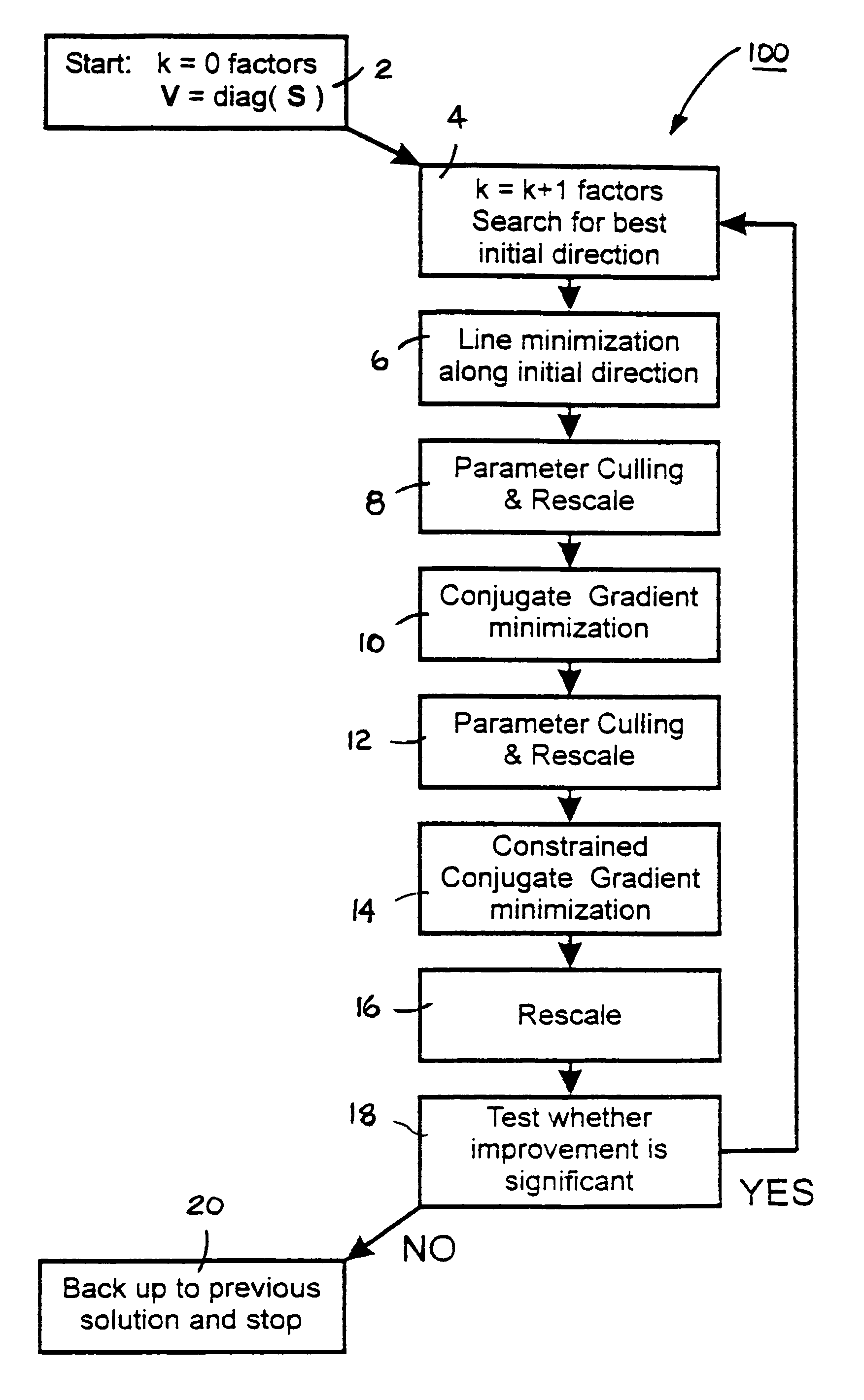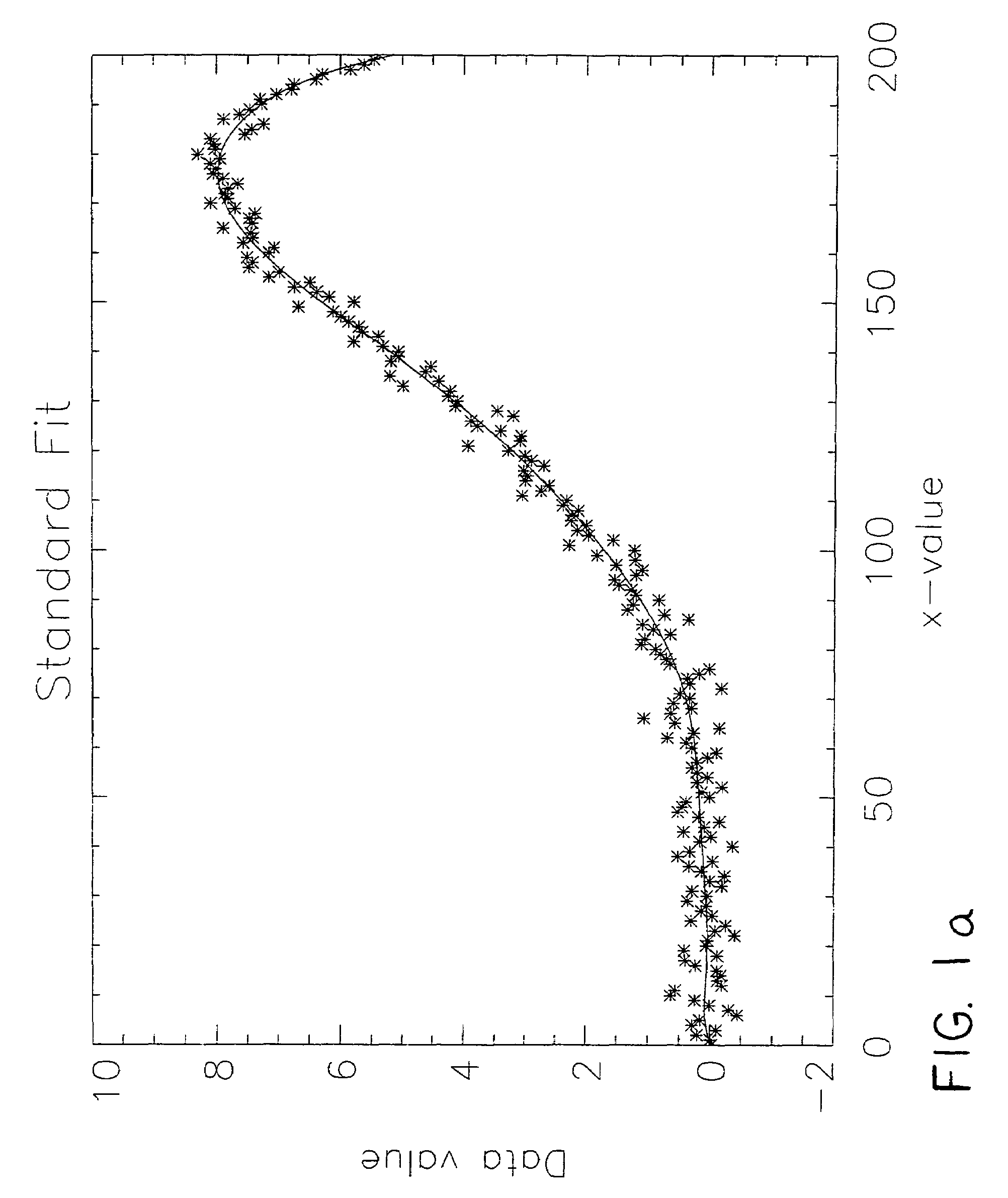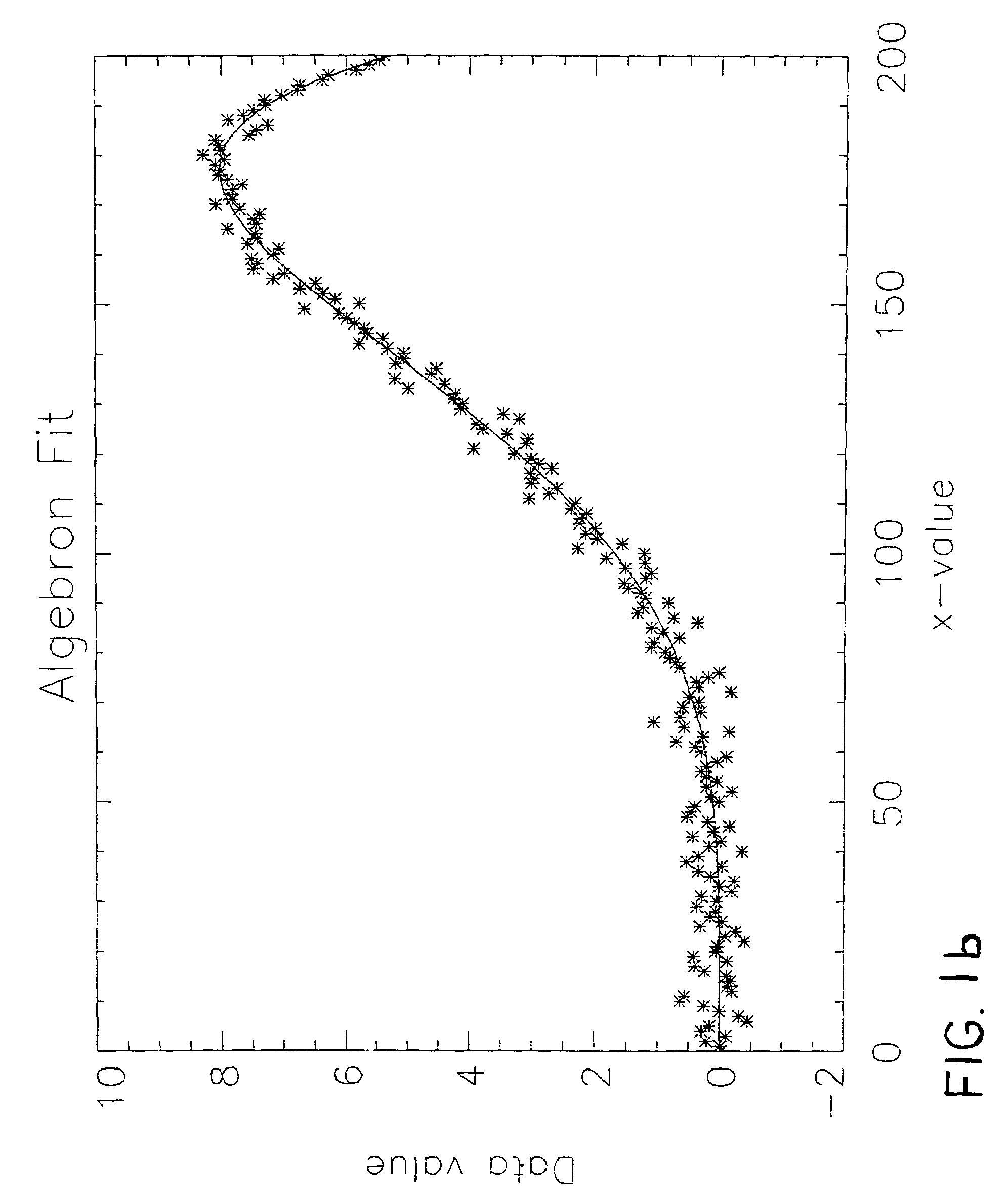System and method for prediction of behavior in financial systems
a financial system and computer-based system technology, applied in the field of computer-based system and method for organization and prediction of behavior in complex systems, can solve the problems of large statistical uncertainty and biases in the derived model parameters, model can end up with too many parameters, improper representation of the system, etc., to accurate measurement and prediction of properties, and minimize the complexity of algebraic models
- Summary
- Abstract
- Description
- Claims
- Application Information
AI Technical Summary
Benefits of technology
Problems solved by technology
Method used
Image
Examples
example 1
[0025]This example illustrates the use of the Algebron™ method to model noisy data that are known to contain an underlying twelfth order polynomial signal. FIGS. 2a and 2b show fits to the measured data. In the specific example chosen here, the true signal is the polynomial y(x)=30x4−20x7−5x8, and the noise is normally distributed (Gaussian) with a standard deviation of 0.25. FIG. 2a shows the result of a χ2-fit of a twelfth order polynomial to the data using standard methods. From visual inspection, the quality of the fit seems quite good. However, the values determined for the coefficients of x4, x7, and x8, of −27836.394, 728246.77, and −890971.70 respectively, are very far from the correct value of 30, −20, and −5. In fact, equally large magnitude values for the coefficients of the other absent polynomial powers are also determined. These large and disturbing errors are due to fitting the data with too complex a model. These problems can only be alleviated by imposing a minimum ...
example 2
[0027]In the second example, the Algebron™ method is used to estimate volatility (covariance matrix) of a family of 132 securities reported over a period of 820 days. With complete data, the covariances of the securities are directly calculable from the returns Xα and Xβ of the individual securities α and β. To reduce the number of independent elements of the covariance matrix, an analysis procedure is used in which each variable Xα is described as a linear combination of unknown factors fβ, and a part that fluctuates independently, Nα, which corresponds to the remaining “noise” associated with the securities:
[0028]Xα=∑β=1kΛα,βfβ.+Nα,(1)
The k factors, fβ, are independent of each other, and independent of the noise terms Nα. The goal of the factor analysis is to determine the minimum set of factors necessary to describe the observations. When this is accomplished, the covariance matrix Vα,β is completely described in terms of the loading matrix Λα,β, and additional, independent di...
PUM
 Login to View More
Login to View More Abstract
Description
Claims
Application Information
 Login to View More
Login to View More - R&D
- Intellectual Property
- Life Sciences
- Materials
- Tech Scout
- Unparalleled Data Quality
- Higher Quality Content
- 60% Fewer Hallucinations
Browse by: Latest US Patents, China's latest patents, Technical Efficacy Thesaurus, Application Domain, Technology Topic, Popular Technical Reports.
© 2025 PatSnap. All rights reserved.Legal|Privacy policy|Modern Slavery Act Transparency Statement|Sitemap|About US| Contact US: help@patsnap.com



